I loved Overwatch, but now I’m done
It’s possible to love a video game. To be devoted to it, to value what it does for you, and how it makes you feel. To want the best for it. Not in the same way you love a person — or at least, I hope not. But take a look at any major fan convention for video games, movies, TV, or almost anything that develops a subculture, and you can see this love is real, active, and powerful.
And of course, profitable.
And if it’s possible to love a video game, then of course it’s possible to fall out of love. To feel disconnected from what first drew you to it. To realize that it isn’t giving you everything it once did, and you can’t give it what it needs from you. Especially if what it needs is regular digital purchases in order to get a competitive advantage in gameplay.
I loved Overwatch once. I don’t anymore. How that happened is, I think, worth examining. This Dear John letter is a broad history of the game Overwatch itself, and its relationship with both its own players and the company that made it.
The honeymoon phase
In 2016, Overwatch was a big deal. A Team Fortress 2-style team shooter, made by the people who brought us Starcraft and Diablo, with incredible character designs that looked like Pixar had decided to reboot G.I. Joe? Players couldn’t get enough of it. And indeed, for the first couple of years Overwatch was a 600-pound Winston of the gaming landscape, dominating game coverage, showing up constantly on Let’s Plays, and causing an excited titter with each newly-announced character and map.
Fast forward six years, and the launch of Overwatch 2 seems to have come and gone with barely a ripple. Between a contentious shift to free-to-play, serious launch problems, and a cloud of problematic exhaustion hovering over Activision Blizzard itself, the shine has come off of the orange stretchy yoga pants.
In 2017 I made this custom Overwatch keycap set, using WASDKeyboards’ art tool, Adobe Illustrator, and a blatant disregard for intellectual property.
Michael Crider/IDG
Despite being obsessed with the original game for years, slurping up every bit of lore, buying every licensed LEGO set, attending a live Overwatch League esports event, and even designing my own Overwatch keyboard, I haven’t been able to bring myself to even enter a single game of Overwatch 2. I can’t force myself to care about it, even for free. There are just too many issues, both internal and external, that make my brain actively reject the new title. I can’t help but stare at the little brick D.Va mech on my desk, and think about all the things that have gone wrong.
A roster full of missed opportunities
Without a doubt, Overwatch’s greatest strength has always been its character design. Each fighter is vibrant, distinct, and interesting. You just want to inspect every little detail, like the best action figures. (In fact, these characters do make pretty great action figures.) And despite being as widely varied as a cyborg ninja, a ballerina sniper, a robot centaur, and a hamster in a 6-foot mecha ball, the art design is so skillfully executed that all of them feel part of the same day-after-tomorrow cartoon future. And it certainly doesn’t hurt that there’s a bit of PG-13 sexiness to almost all of them, even the grizzled old veterans. Blizzard knows how the bread gets buttered.

Blizzard
But the designs themselves are only part of the appeal. With absolutely incredible animation (again, shades of Pixar) and skillful voice acting, the characters seem like they could walk out of a 6-on-6 deathmatch and into an anime. They kind of do: while prerendered cinematics don’t get the same gee-wow reactions they did back in the days of the original Warcraft and Starcraft, the short vignettes created to flesh out the characters and the world of Overwatch remain some of the best parts of the property.
And herein lies the problem. Overwatch has this wonderful cast of characters, brought to life with loving animation and voice acting, and you even get to inhabit them in gameplay. But when you try to dig deeper into the story surrounding the characters, you find yourself shoveling water out of a shallow puddle. Despite most of these characters having a deep backstory with the vaguely Avengers-esque Overwatch organization, the game’s story starts — and effectively ends — with Winston “reactivating” the team after years of downtime in the original intro video.
What happens next? Ostensibly, the gameplay of Overwatch 1…which never actually progresses the story. It’s so vague and ill-defined that you can play on a team filled with Overwatch “good guys,” Talon “bad guys,” and the various in-between mercenary types, and it makes sense. Because there’s no sense at all. You don’t necessarily need it for a session of team shooting, but for those of us who’ve been craving actual progression and depth for these characters, it feels like we’re all Tantalus trying to get a sip.
Every gorgeous cinematic is essentially prologue, much of which we already knew. Even the few seasonal event missions, repeated every year since launch ad nauseam, have to take place before the “reactivation” start of the story, because otherwise they don’t make sense with the paper-thin narrative of the gameplay. Every one of the dozens of comics and short stories Blizzard has given us is adding to a huge mountain of prelude, every new character has to have something they were doing before Winston presses that pivotal — and ultimately meaningless — button.
Overwatch was sold as an ever-expanding roster of fantastic characters. And it is, or at least it was, until work unceremoniously paused for the developers to create a pseudo-sequel. But even fighting games and MOBAs, whose characters barely ever go deeper than “person who fights other people,” have stories that progress and resolve to a certain degree. Overwatch doesn’t, and never has. As a fan who genuinely loves a lot of these characters, watching them remain frozen in time even as the game ostensibly progresses is something I find incredibly frustrating.
Gameplay is a moving target
Overwatch’s gameplay struggled with a bit of an identity crisis at launch. Broadly similar to Team Fortress 2, it encouraged fast-paced coordination with a team, with a secondary feature of constantly switching between its many heroes to counter the choices of the other side. But while TF2 could have huge teams and dozens of active players in its broad offense, defense, and support roles, the more varied, specialized cast in Overwatch had shades of MOBAs like League of Legends.
While the multiplayer matches never ceased to be fun, issues cropped up almost immediately. The combo of shields and turrets proved to be extremely difficult to crack without precision teamwork, especially when combined with the self-propelling cart objective. Some characters like Hanzo and Symmetra had abilities that were overpowered, making them nearly unstoppable in specific situations, while traditional shooter roles like Widowmaker’s sniper or Tracer’s scout were all but useless without a high-skill player behind them.
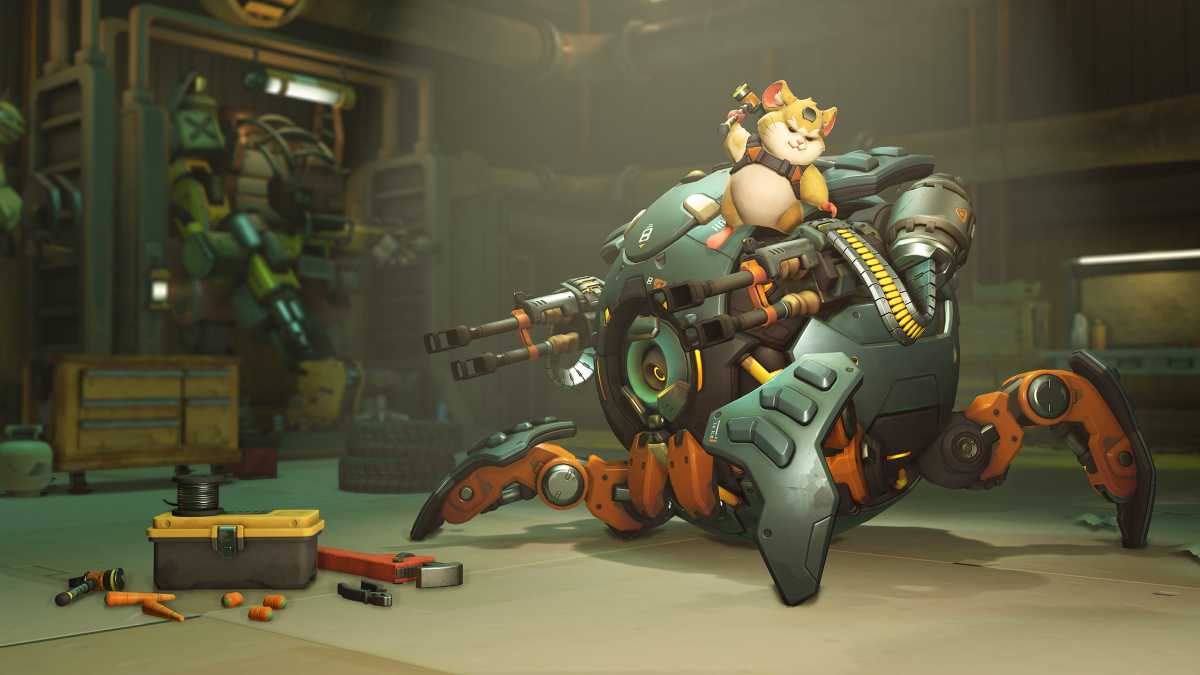
Blizzard
And of course, you had the usual problem of people missing the point of a team-based shooter: the team is more important than the shooting. Even in competitive modes, players would flock to the more viscerally fun offensive-based characters, collecting kills while tanks and supports collected dust. Again, the minute-to-minute gameplay was always fast and enjoyable, but anyone focused on actually winning games (and at least willing to try the role-based teamwork) quickly grew frustrated.
Blizzard’s answer was to continually tweak both the characters and the game’s very structure. In addition to the usual small adjustments for the sake of balance and flow, characters would receive effective redesigns from the ground up to try and address overwhelming advantages. Notable examples include axing Mercy’s full-team revival power, tweaking turret specialists Torbjorn and Bastion to force them into more mobile roles, toning down overpowered abilities from Hanzo and Roadhog, and completely redesigning Symmetra’s specialized power set not once, but twice.
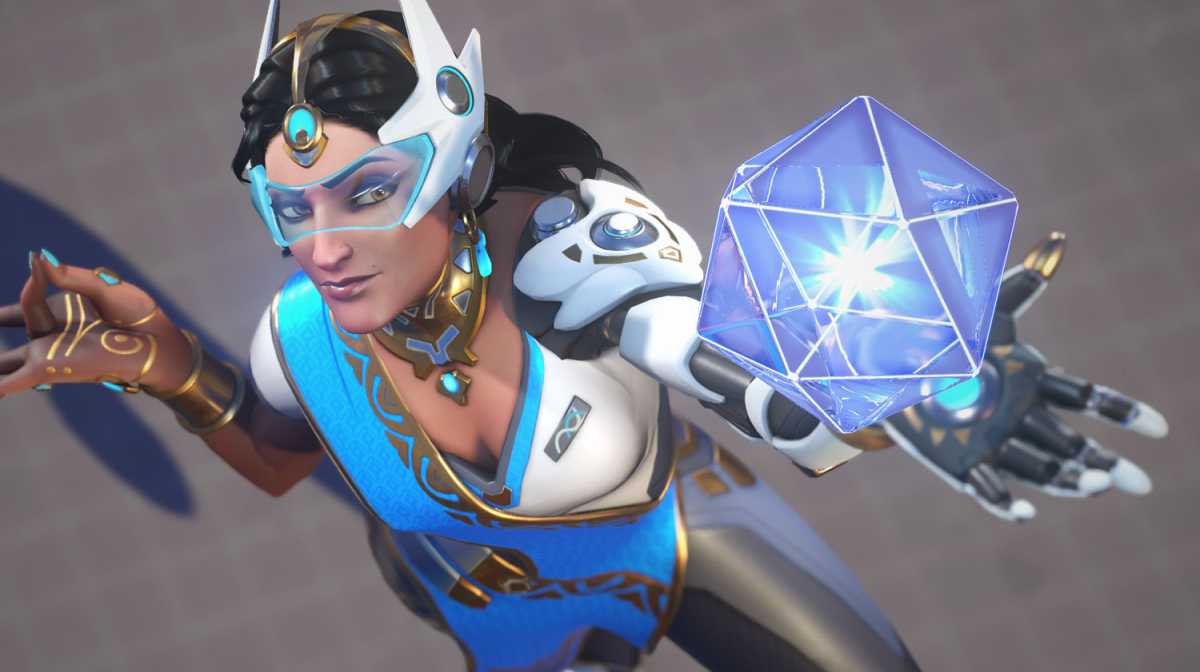
Blizzard completely redesigned the skills of heroes like Symmetra, often multiple times.
Blizzard
On top of the constant character tweaks that players had to adjust to, Blizzard would radically change the game’s setup on more than one occasion. While initially players could load up multiple copies of each character on both teams, the game switched to selections that blocked out a character after another player had chosen them. This spelled the end of fun if tactically unsound compositions, like a team full of giant hammer-swinging Reinhardt knights and one zippy little Lucio to boost their speed and heal them up.
But a bigger change was re-arranging the division of characters from offense/defense/tank/support to just three divisions, damage/tank/healer. Because there was a roughly even split before, and because some characters were pretty borderline anyway, this suddenly meant that there were more than double the number of damage characters as either tank or healer…despite an ostensibly “even” split in the importance of those three roles. Initially the only real difference was fodder for team comp squabbles (“can we PLEASE get some healers?” asks the guy who refuses to switch off Genji), technical discussions about the meta, and lots and lots of forum battles. But as newer characters were introduced and the roster of damage choices continued to outpace tanks and supports, Blizzard created Role Queue. This would turn out to be the least popular and most problematic choice in the game’s brief history.

Blizzard
Forcing teams to have only one “copy” of each hero restricted player choices somewhat, but the large roster made up for it. But role queue forced players to choose damage, tank, or healer right from the start of their play session, with no way to switch out of that choice without ending (or just quitting) the current match. Predictably, ever-longer digital lines formed up behind the “damage” queue, which contained the most fun and popular characters even before two categories were smooshed into one gigantic one. With a big, frustrating barrier between players and the main content of the game, Overwatch suddenly became an exercise in patience.
While all of this was going on, Blizzard seemed more concerned with a part of the game that, well, wasn’t actually a part of the game. The Overwatch League was meant to be a bold new direction in esports, adapting city-based teams and fandoms into a system that had previously been more akin to following individual golfers or boxers climb up the ranks. Initially met with a lot of optimism among Overwatch fans, if not esports as a whole, Blizzard sank billions into establishing the league and getting investors for the dozens of city-based teams.
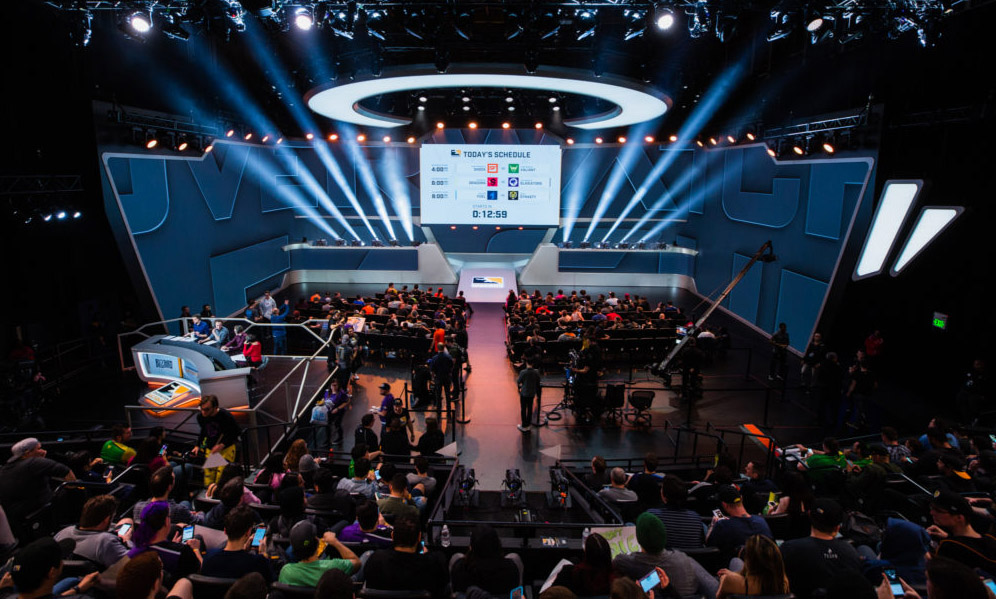
Activision Blizzard
But as it turns out, you can’t make a game that appeals equally to the kind of .01 percent of gamers who can compete internationally, and the kind of gamers who can enjoy playing a fast-paced shooter on the Nintendo Switch. Blizzard’s gameplay tweaks and balance adjustments quickly seemed to pivot towards making OWL matches closer and more exciting, instead of trying to keep the various playable heroes on even footing for the casual and competitive modes of Overwatch itself. (You know, the thing millions of players were actively engaging in the product, instead of watching it on a Twitch stream.)
Between long wait times to play in role queue, tweaks that seemed to be made for the benefit of everyone except the game’s player base, and content updates that became more and more anemic, Overwatch gradually lost grip of the public’s attention and never got it back. The announcement of Overwatch 2, and the subsequent and indefinite wait for it to actually release, essentially spelled the end of the original game.
Broken PvE promises
Which isn’t to say that it was the death of Overwatch as a brand. Blizzard did a poor job of explaining exactly what Overwatch 2 is, aside from the fact that it isn’t a sequel in the conventional sense. But one of the most exciting features was to be an expanded focus on player-versus-environment modes, indulging players like me who wanted more story and weren’t necessarily invested in the constant competition of the opposing shooter modes.
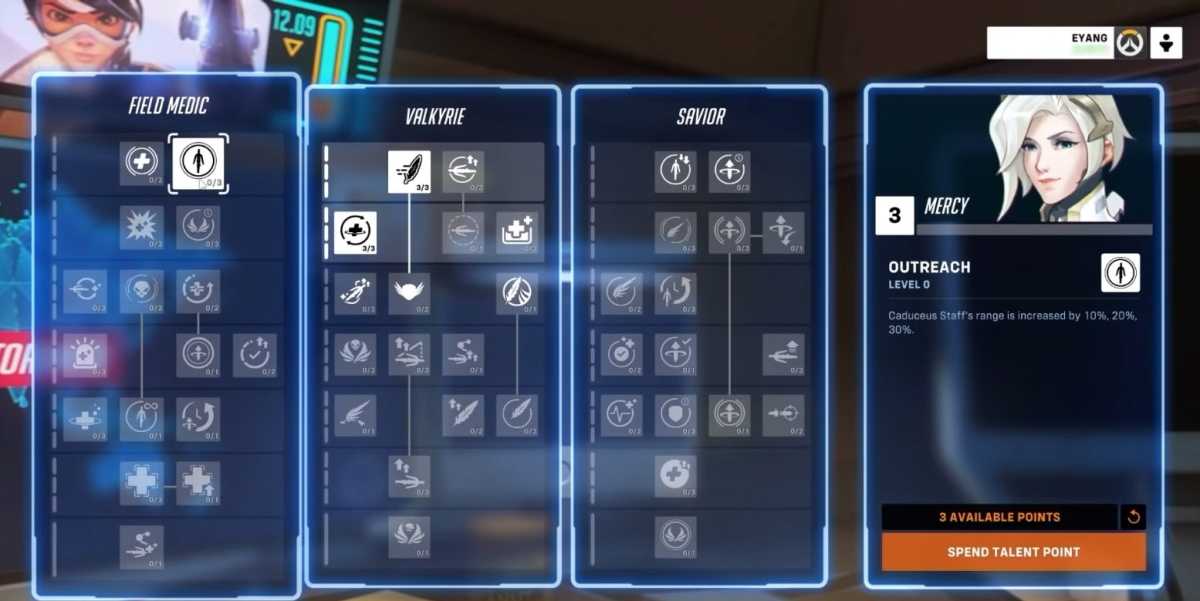
The skill tree from Overwatch 2’s PvE mode…which you won’t see until 2023. At least.
Blizzard
After a few years of short and repetitive PvE missions, which as I previously said were wholly uninterested in actually progressing the story or the characters beyond the big button press, I was stoked. The initial Blizzcon 2019 presentation seemed to indicate that we’d be getting a series of grander and much more interesting single-player missions, focusing on dynamic team compositions, set-piece battles, and upgrading and expanding individual powers as they progressed, MOBA-style.
This would be a huge improvement on the first game, which offered a grand total of four missions in which you could team up to tell an actual story. (One of which, Junkenstein’s Revenge, was an entertaining but non-canon dress-up session.) The first cinematic for Overwatch 2 even drove this point home: the team is finally assembled and ready for action, ostensibly getting off the giant pause button the story had been suck on since 2016.
And yet, when Blizzard announced it was finally ready for beta testers, what it would be testing was…the standard multiplayer mode. Sure, there are tweaks: another character power reboot for Orisa, newcomer Sojourn (another offense hero, natch), and teams are now limited to five players on a side instead of six. But that highly-touted PvE content, as it turns out, will have to wait until 2023.
Let that sink in for a moment. This game, which started with what looked like an interesting setup to tell stories in a brand new Blizzard world, has to wait seven years after its initial launch date to get any kind of forward progression for those stories. And that’s assuming that Blizzard actually fulfills its promise and doesn’t give us a series of insubstantial mini-missions, as was the case with the original game.
I played through the beta, and made a few observations with friends about how it had shifted slightly. Quicker gameplay, less focus on shields with only one tank per side, an easier time breaking through choke points. But it felt like a refinement of the original game, not a true sequel or even a re-launch. Any enthusiasm I had for engaging in this universe in which I had invested so much time was, once again, put on pause.
…and everything else
The final death knell for my interest in Overwatch 2 came when it was announced that it would switch to a free-to-play setup with a battle pass system, in which players would need to either pay or grind to unlock new characters. (Those who hadn’t bought the first game, which would disappear once Overwatch 2 launched, would even have to grind to unlock some of the original cast.) With every game from Fortnite to Rocket League to Clash of Clans trying to sell me a battle pass, and then trying to get me to grind it out multiple times every year, I’d had enough.
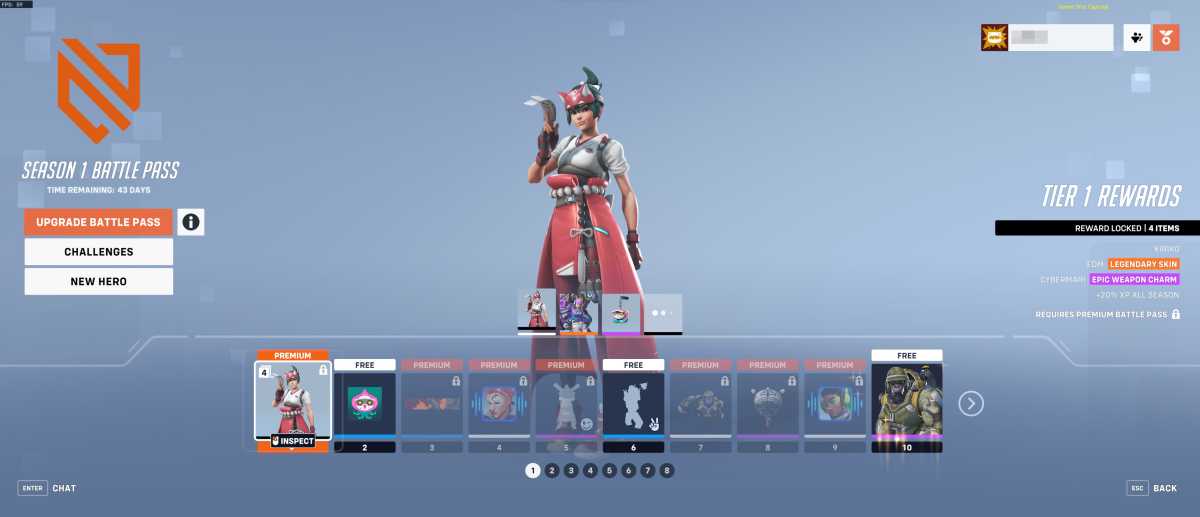
Michael Crider/IDG
To play devil’s advocate, Overwatch really should have been a free-to-play game from the start. Activision Blizzard has made more money slinging the randomized loot boxes, primed with limited events and artificial scarcity to such a degree that they’ve been banned as de facto gambling in some countries, than it ever did in sales of the actual game.
But battle passes have quickly become an even more greedy alternative, particularly where Activision Blizzard is concerned. True, they don’t require spinning a roulette wheel to unlock their ingrained prizes. But they’ve now become a way of splitting the player base into the haves and have-nots, in which those who pay up have specific advantages in gameplay. That’s not always the case — Fortnite remains refreshingly dedicated to cosmetic-only upgrades, for example. But it’s certainly true in Overwatch, where half of the strategy is supposed to be switching your character on the fly to counter the choices of the other team and complement your own. And Activision Blizzard had recently pulled the same distasteful move in Hearthstone, where players of the popular Battlegrounds mode now have to pay real money to get the best chance of pulling the hero they actually want to use.

Overwatch isn’t the only Blizzard game trying to suck more money out of you: Hearthstone now charges for hero choices in Battlegrounds.
Blizzard
After years of grinding for lootboxes and somehow still missing out on some of the best skins in the game, Overwatch players are no strangers to dealing with Activision Blizzard’s greed. The manipulative battle pass system was the straw that broke the hover-payload for me. I had been growing increasingly frustrated with the company due to its behind-the-scenes problems.
If you follow game industry news, you know what I’m talking about. An apparent willingness to engage in China’s oppressive cultural mandates. Accusations of employee abuse and sexism, and a subsequent investigation by the state of California. Alleged crackdowns against unionization efforts by A-B employees. Specific and deeply troubling accusations of CEO Bobby Kotick, who remains at the company to this day. Blizzard’s internal problems are so systemic that it’s had to rename multiple fictional characters, including cowboy Cole Cassidy (nee “Jesse McCree”), because their employee namesakes have been ousted for accusations of sexual assault.
During all of that, key Blizzard leadership including Overwatch game director Jeff Kaplan have left the company. Without turning this article into a laundry list of complaints against Activision Blizzard, it seems to be a deeply troubled company that doesn’t treat its employees with even basic dignity. Its responses to these controversies have been the usual corporate dross, and have done almost nothing to indicate that it’s interested in actual change.
Microsoft bought Activision Blizzard at the start of this year, part of its ongoing efforts to create a stable of first-party developers and publishers to compete with Sony and Nintendo. Though the tech giant has given a few terse statements on the ongoing situation with its latest acquisition, there’s no indication that it will get rid of Kotick, a specific request of thousands of employees. It doesn’t seem like Microsoft cares whether Activision Blizzard continues to slide towards anti-consumer monetization strategies, either.
No big loss
So with all of that running through my mind, I felt weirdly relieved trying to get into a game of Overwatch 2 on launch day, and being met with a queue of 40,000 people that never seemed to get any shorter. The situation stayed the same for three days, and each time the game stubbornly refused to load, I almost felt happy to go do something else.
Blizzard said it was a DDOS attack. I say it was a blessing, an excuse to close the launcher and find another game to fill my time. It’s possible to actually get into matches now, despite an ongoing host of issues — perhaps not surprising from a company that seems to be actively battling its own QA department. But my experience with Overwatch 2 is still limited to about an hour of the beta.
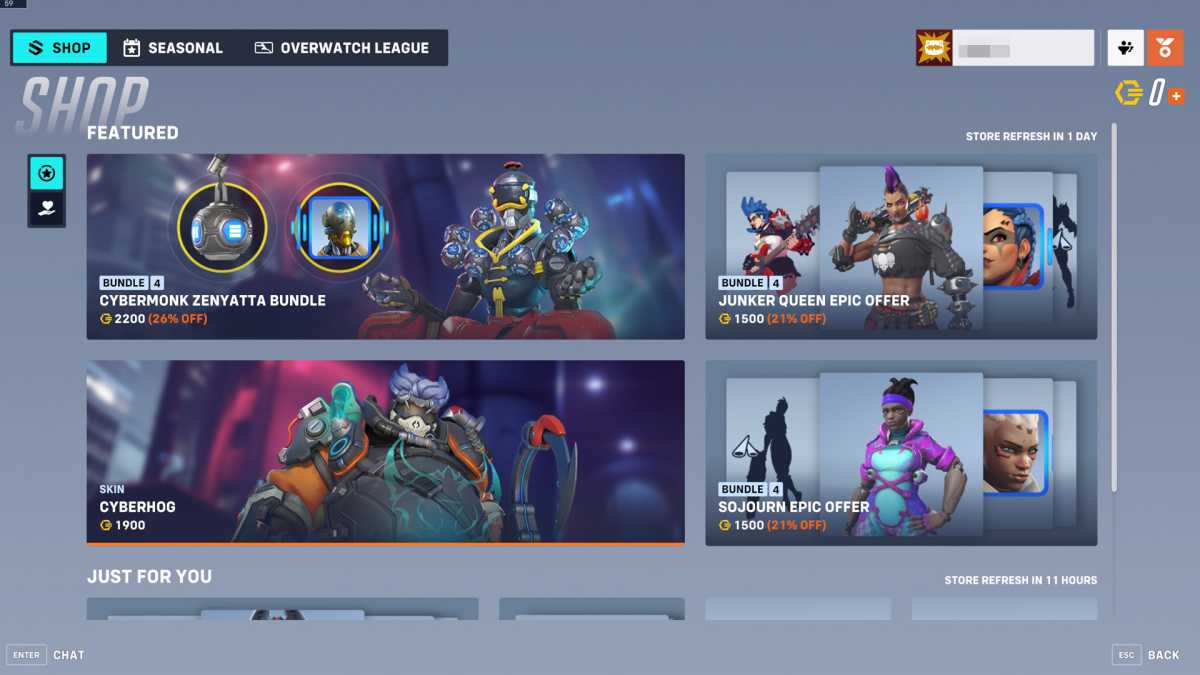
Blizzard
Overwatch isn’t the same game it was in 2016. That’s no indictment: a multiplayer game actively courting an audience of millions should change, especially if it sells itself on remaining new and interesting. But for every improvement the Overwatch developers have made, it seems like they’ve also taken a step back, especially in terms of avaricious monetization. And Blizzard certainly isn’t the same developer it was in 2016…or at least, it isn’t the developer we thought it was, unburdened by a host of illuminating peeks behind the curtain.
Maybe I’ll re-engage with this once-wonderful property when it launches some story content next year, and becomes more than “Overwatch 1.5.” Maybe some time apart will be good for both of us. Or maybe I’ll skim the gaming news headlines and see if Activision Blizzard has decided to treat its employees better, perhaps under the stern gaze of its new owner and the guiding hand of absolutely anyone except Bobby Kotick.
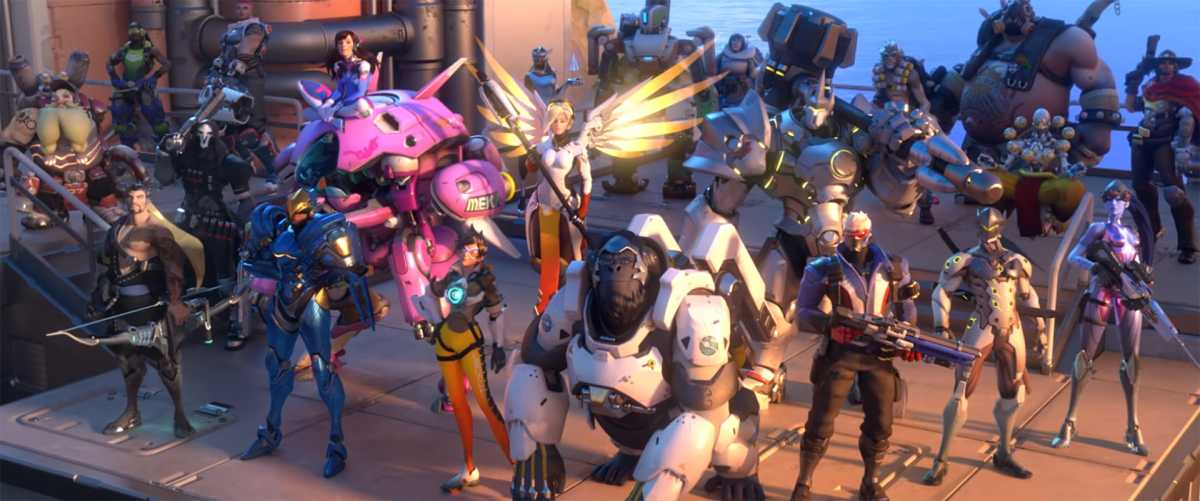
Blizzard
Or maybe I’ll forget all about it between now and then. Maybe most of Overwatch’s original fans will, too. I shouldn’t be tempted to return to a place that I know is bad for me, just because I can remember when it wasn’t. Maybe I’ll let this overly long article serve as the final breakup for a game I used to genuinely love. At this point I’m reminded of perhaps the most famous breakup line in history: Frankly, Overwatch, I don’t give a damn.
For all the latest Technology News Click Here
For the latest news and updates, follow us on Google News.
